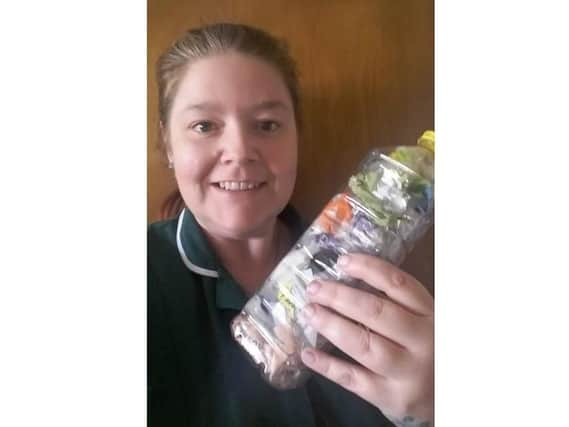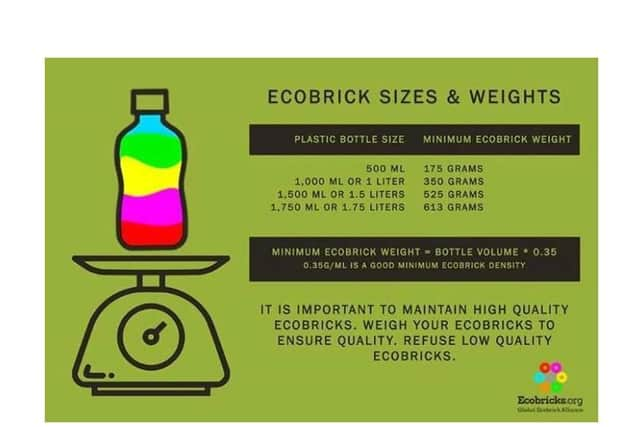Daventry woman fights plastic crisis one non-recyclable brick at a time


Rebecca Bostock was inspired after seeing the Drowning In Plastic documentary on BBC One and has started filling bottles with bits of plastic to turn them into bricks, called ecobricks.
After becoming upset by the images in the film, namely scores of plastic items floating on top of the ocean, Rebecca began researching online and came across the Global Ecobrick Alliance's (GEA) website.
Advertisement
Hide AdAdvertisement
Hide AdNow, 40-year-old Rebecca, who has lived in Daventry her whole life, has volunteered as a collection point for ecobricks in Daventry and she wants more people to get involved.


"Seeing what we have done to the planet and how much of a problem it is was heartbreaking," she said.
"I was looking at ways to help and for me, this is just a tiny way to do my part to solve this mess we have created."
She added: "People are waking up to the problem of plastic; I feel things like this need to be more widespread so we can do something about it."
Advertisement
Hide AdAdvertisement
Hide AdPlastic, which made using petrochemicals, is not biodegradable and often ends up on landfills and bodies of water around the world, and can be dangerous to animals and vegetation.
The aim of ecobricks is to remove plastic from the biosphere.
To create an ecobrick you need an empty plastic bottle which is then filled with cut up bits the likes of styrofoam, bags, packaging, straws and cellophane.
The bottom layer of the bottle has to be the same colour plastic and it must be clean and dry because any biological matter can rot and cause the ecobrick to become unstable and unsealable.
Advertisement
Hide AdAdvertisement
Hide AdA stick or spoon is then used to push the hard and soft plastic down inside the bottle until it becomes dense and solid.
Ecobricks can be used as a building material for homes and schools, though GEA says 99 per cent of the bricks are used for small home, school and community creations.
Since learning about ecobricks on Wednesday, community care worker Rebecca has already made her first one.
"It's something I feel really strongly about and it's a great thing for our schools to get involved in too," she said.
Any ecobricks can be dropped off for collection by a special courier at Rebecca's home at 9 Rawlings Close, Daventry.